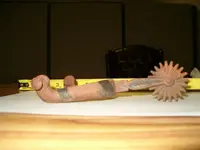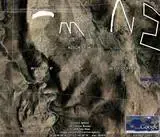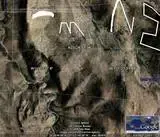Hello LamarFEMF said:Hello Lamarlamar said:Dear FEMF;FEMF said:Hello Mikegollum said:FEMF,
I put Lamar on "IGNORE" a while back because I found myself having to repeat the same proofs over and over and over. At first, he added a lot to the conversations and kept us on our toes. He then degenerated into acting offended at some inconsequential remark so he wouldn't have to address the subject at hand when he was proven wrong. Further debate with him became very frustrating and did nothing to further any knowledge.
I guess you must have some inside knowledge that proves the heart insert is older than the trail stones. Have you ever seen the Stone Maps in person? Yesterday was my third time. First time hands on (see pic). The heart is made from a different type of stone than the trail maps. I can't say that it is any older or younger.
The symbol on the handle of the dagger is not necessarily an "A". Please compare the symbol to every other "A" on the maps. It actually more closely resembles another symbol somewhere else on the maps.
Best-Mike
Yes I've seen them three times at M.M. Museum, the first time was with Mason Cogan for free, the next time it was $50.00, the last time was with Mikael Davis, a San Carlos medicine man and it cost me $75.00.
I'm at work right now and I don't have those maps on this computer, but I'll check when I get home.
Mike we have found another horse shoe with the Cross in a Heart?
FEMF
P.S. As I've told you before Mike,"ALL THE WAY" "ALL THE TIME" old school!
Regarding your horseshoes, they are interesting from a purely historical point of view, my friend. First, the complete shoe was manufactured sometime after 1835 due to the way it was manufactured. It does not seem to have been hand formed on an anvil from iron bar stock, rather it seems to be a mass produced shoe which are produced by specialized machinery.
This may be evidenced by the remnants of the groove located in the zones where the nail heads are seated onto the shoe. The grooves are placed there in order to keep the nail heads from wearing down, thus throwing the shoe after a short period of time. The manufacture of the nail head grooves (also called a Fuller groove) is a very simple one when using forming dies, yet they are extremely difficult to produce using hand methods, as the iron tends to expand directionally, thus making the shoe wider and thinner. Also, I seem to be able to discern a forging mark which seems to be a broken heart.
The narrow shoe body plus the wear on the outside portion of the shoe indicates that the shoe was worn by a small animal and used as a beast of burden. Typical shoes normally wear evenly along the front of the toe clip, yet this particular shoe is worn along the outside, which indicates the animal in question typically carried large weights, thus altering the balance of it's print.
The half shoe is older and it looks to be a completely hand made one. The animal was much bigger and it seems to have been from a smaller draft style horse. As such, it would have most probably been used as a beast of burden as well, for attempting to ride a draft animal can be painfully uncomfortable, due to the heavy plodding steps of the breed.
Your friend;
LAMAR
I'm pressed for time right now, but I will respond.
Thank you.
FEMF
If your observations are corract, then the same people used the same range over an extended period of time. Ranch?? maybe. Hears a silver in lay spur, when I first found it, I thought Spanish Silver Spur! It's a Star Brand and was manufactured in New Jersey from 1848 to the 1970's, sold through mail order and was the prime supplier for the Union Army.
Thanks for the information Lamar.
FEMF















